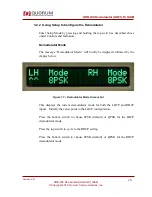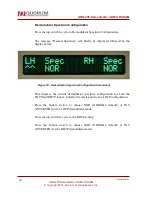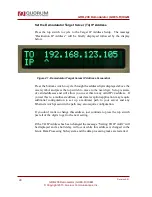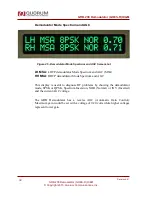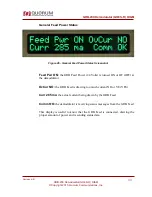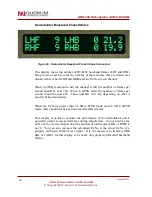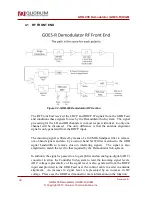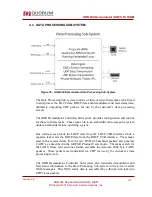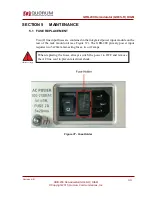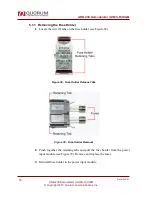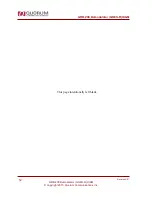
GRB-200 Demodulator (GOES-R) OI&M
GRB-200 Demodulator (GOES-R) OI&M
© Copyright 2015, Quorum Communications, Inc.
37
Revision A.01
3.4 RECEIVING GRB DATA
The data received by the GRB Demodulator is processed in a small embedded
microcomputer system running a version of embedded Linux. The data received
from the LHCP and RHCP inputs is processed in separate tasks which are named
GRBrxLH and GRBrxRH. These tasks read the received data from the LHCP and
RHCP demodulator outputs, frame sync the data to produce CADUs as described
in volume 4 of the GOES-R Product Definition and Users’ Guide (PUG). The
most current version of the PUG as of this writing is Revision C and the CADU
format is described in section 4.4.1.
Figure 30 - Channel Access Data Unit (CADU) Structure
The CADUs are then transmitted as a UDP packet directed to the Target Data
Server (TO IP) IP Address. LHCP data is sent to port 50010 and RHCP data is
sent to port 50020.
To receive the data, connect the gigabit Ethernet port of the GRB Demodulator to
your Data Processing Server and read it from the appropriate UDP port.
It is important to note that the GRB Demodulator does not modify the received
data in any way other than to frame sync it into CADUs. The data processing
tasks also do not look at any of the data within the CADU, other than the 4 octet
Sync. The result is that the GRB Demodulator is transparent to the data content
being sent.
A free software package, CSPP Geo GRB, is available from the Space Science
and Engineering group at the University of Wisconsin – Madison which can
directly utilize the output of the Quorum GRB Demodulator.



